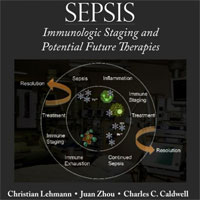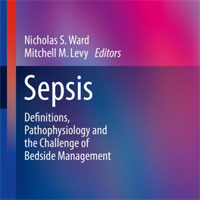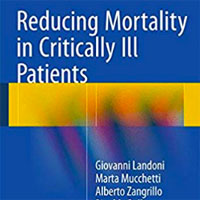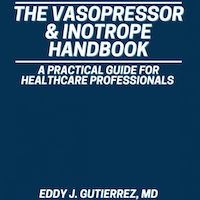Tag: therapy
Catheter-Directed Therapy for PE Built on Fallacy
Tissue plasminogen activator has a notoriously checkered past within emergency medicine, and its controversial use continues with the advent of targeted therapy for pulmonary embolism. Catheter-directed administration of... read more
Effect of high-flow nasal cannula oxygen therapy in adults with acute hypoxemic respiratory failure
Conflicting recommendations exist on whether high-flow nasal cannula (HFNC) oxygen therapy should be administered to adult patients in critical care with acute hypoxemic respiratory failure. We performed a meta-analysis of... read more
Probiotic and Synbiotic Therapy in Critical Illness
Critical illness is characterized by a loss of commensal flora and an overgrowth of potentially pathogenic bacteria, leading to a high susceptibility to nosocomial infections. Probiotics are living non-pathogenic microorganisms,... read more
Enough is Enough (O2 Saturation of 94-96%)
The liberal use of supplemental oxygen therapy in acutely ill adults has a long history in the hospital, but high-quality therapy supporting its practice is unclear. Recently, the role of oxygen therapy in non-hypoxic patients... read more
Reassessing the death risk related to probiotics in critically ill patients
Probiotics prove to be a very useful weapon to reduce infections in critically ill patients, although strong recommendation in support of their use cannot be drawn yet. Reassessing the risk ratio with the meta-analytic software... read more
Association of Antibiotic Treatment with Outcomes in Patients Hospitalized for an Asthma Exacerbation Treated with Systemic Corticosteroids
Antibiotic therapy may be associated with a longer hospital length of stay, higher hospital cost, and similar risk of treatment failure. These results highlight the need to reduce inappropriate antibiotic prescribing among... read more
Less or More Hemodynamic Monitoring in Critically Ill Patients
The use of echocardiography should be initially encouraged in patients with shock to identify the type of shock and to select the most appropriate therapy. The use of more invasive hemodynamic monitoring techniques should... read more
What constitutes optimal glucose management in Critical Care?
Glycaemic Control in the EU. Following on from the poster we presented at the Intensive Care Society. We asked Sphere Medical's own Dr Gavin Troughton to present at our launch event. In the below video he goes into more... read more
A Mixed Methods Exploration of ICU Nurses’ Perception of Handling Oxygen Therapy to Critically Ill Patients
Nurses handle supplementary oxygen to intensive care unit (ICU) patients as part of their daily practice. To secure patients of optimal and safe care, knowledge of nurses' perception of this practice, including influencing... read more
Management of the Critically Ill Adult Chimeric Antigen Receptor-T Cell Therapy Patient
Until modifications in chimeric antigen receptor T-cell therapy decrease their toxicities, the intensivist will play a leading role in the management of critically ill chimeric antigen receptor T-cell patients. As this novel... read more
High-flow Nasal Cannula Oxygen Therapy for AHRF in Patients with CLD
A high-flow nasal cannula (HFNC) is a high-flow oxygen supply device developed in recent years and is increasingly being used to treat acute hypoxemic respiratory failure (AHRF) in intensive care unit (ICU). Patients with... read more
Principles of Fluid Management and Stewardship in Septic Shock
There are only four major indications for fluid administration in the critically ill: resuscitation, maintenance, replacement and nutrition (enteral or parenteral). In this review, a conceptual framework is presented looking... read more
Meaning of Intracranial Pressure-to-Blood Pressure Fisher-Transformed Pearson Correlation-Derived Optimal Cerebral Perfusion Pressure
These mechanistic simulations provide insight into the empiric basis of optimal cerebral perfusion pressure and the significance of PRx and Δ CPP. PRx and optimal cerebral perfusion pressure deviations do not directly reflect... read more
Dual Antiplatelet Therapy with Aspirin and Clopidogrel for Acute High Risk Transient Ischemic Attack and Minor Ischemic Stroke
What is the role of dual antiplatelet therapy after high risk transient ischemic attack or minor stroke? Specifically, does dual antiplatelet therapy with a combination of aspirin and clopidogrel lead to a greater reduction... read more
Bedside Ultrasound Assessment of Lung Reaeration in Patients With Blunt Thoracic Injury Receiving High-Flow Nasal Cannula Oxygen Therapy
High-flow nasal cannula oxygen therapy may be considered as an initial respiratory therapy for trauma patients with blunt chest injury. High-flow nasal cannula therapy could improve lung aeration as noted by the transthoracic... read more
The Effectiveness of Non-Pharmacological Interventions in Reducing the Incidence and Duration of Delirium in Critically Ill Patients
Current evidence does not support the use of non-pharmacological interventions in reducing incidence and duration of delirium in critically ill patients. Future research should consider well-designed and well-described multicomponent... read more
Discontinuing 5-ASA Safe Upon Anti-TNF Induction for Ulcerative Colitis
Patients with ulcerative colitis who discontinue 5-aminosalicylate therapy once they begin anti-TNF therapy do not appear at great risk for adverse clinical events, according to research published in Gut. Researchers analyzed... read more
Mortality and Morbidity in Acutely Ill Adults Treated with Liberal vs. Conservative Oxygen Therapy
In acutely ill adults, high-quality evidence shows that liberal oxygen therapy increases mortality without improving other patient-important outcomes. Supplemental oxygen might become unfavourable above an SpO2 range of 94-96%.... read more
Antithrombotic Therapy for Venous Thromboembolic Disease
This JAMA Clinical Guidelines Synopsis summarizes the American College of Chest Physicians' 2016 recommendations on antithrombotic therapy for venous thromboembolism (VTE). The estimated annual incidence of VTE, defined... read more
“Real-World” Application of Thrombolysis in Cardiac Arrest
In a single center's experience, thrombolytic therapy is used infrequently for the management of cardiac arrest. Thrombolysis during cardiac arrest should be considered on a case-by-case basis and should be utilized only... read more
Carbonic anhydrase inhibitors in patients with respiratory failure and metabolic alkalosis
In patients with respiratory failure and metabolic alkalosis, carbonic anhydrase inhibitor therapy may have favorable effects on blood gas parameters. In mechanically ventilated patients, carbonic anhydrase inhibitor therapy... read more
Sedation and Mobilization during Venovenous Extracorporeal Membrane Oxygenation for ARF
The majority of respondents reported targeting moderate to deep sedation following cannulation, with the use of sedative and opioid infusions. There is considerable variability surrounding early physical therapy and mobilization... read more









